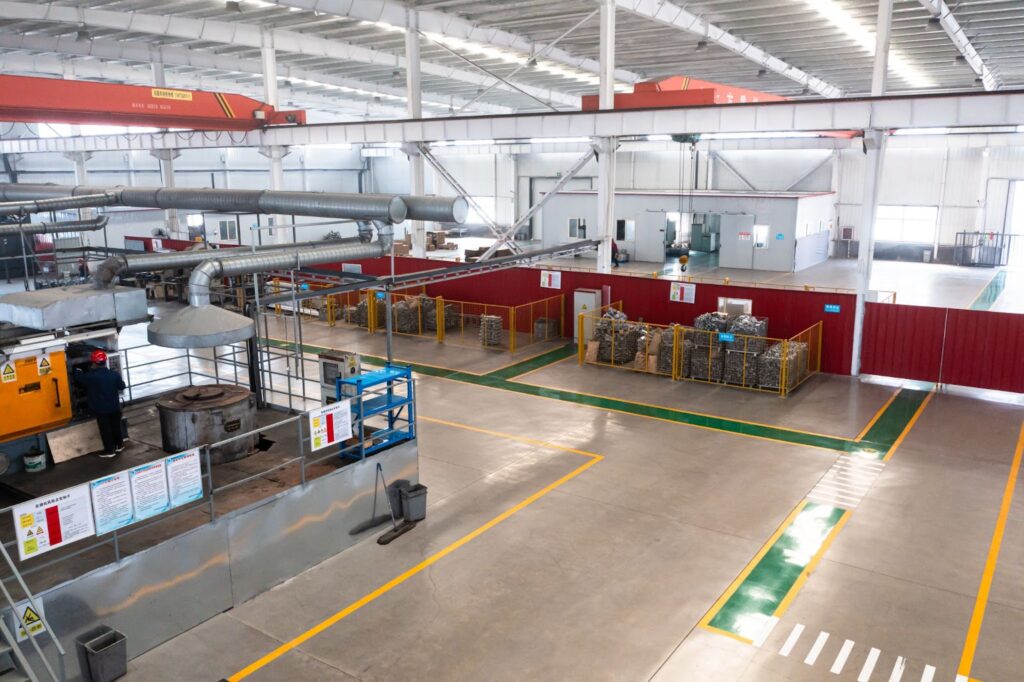For the automotive, aerospace, energy, and robotics industries, producing precision gears efficiently is crucial for machines to run properly and safely.
However, traditional methods of cutting gears often struggle to deliver quality components on time and are very costly.
Gear hobbing offers a solution to this challenge. This advanced method produces gears with superior accuracy and efficiency, especially for mass production.
In this article, we’ll discuss the benefits of gear hobbing, how it compares to gear milling, and how Bunty can help you meet your gear hobbing needs.
Gear hobbing is a machining process used to cut precise teeth into gear blanks, commonly used to produce gears, splines, and sprockets.
A gear blank—which is a toothless metal piece—is held between two spindles, while a spinning cutting tool called a hob is placed against it.
These two spin at a precise and controlled motion as the hob cuts a tooth profile on the gear blank, as shown in the video below.
Source: Gleason Corporation on YouTube
The gear hobbing process has existed for over a century, evolving from manually operated machines in the late 1800s to today’s fully automated CNC-controlled systems.
Gear hobbing has advantages that make it a highly preferred method of manufacturing gears, so let’s explore some of the main ones.
For starters, gear hobbing is a highly efficient, fast, and continuous cutting process. This makes it ideal for consistently producing high-quality gears in large quantities.
It involves minimal machine setup and requires few tooling changes, making it an efficient process for gear production.
Namely, with a single gear hobbing machine setup, you can get numerous identical gears without needing tool swaps.
Compared to other methods like gear milling, gear hobbing offers greater speed, precision, and scalability.
Another key benefit of gear hobbing is its ability to produce different types of gears.
Depending on the tool and setup, gear hobbing can produce various gear types such as spur and helical gears, along with splines and sprockets.
It’s also worth mentioning that the gear hobbing process is highly efficient, resulting in lower manufacturing costs.
This efficiency is possible thanks to the precise cutting action of the hob, which minimizes material waste and ensures optimal use of raw materials.
As a result, manufacturers save on both material costs and post-processing efforts, contributing to overall cost reductions.
When it comes to manufacturing gears, two methods stand out: gear hobbing and gear milling.
These two methods differ in the way they operate, their applications, and their limitations.
Gear hobbing is a continuous, automated process that uses a rotating hob to cut gear teeth efficiently.
On the other hand, gear milling is an intermittent process where individual teeth are cut one at a time using a milling cutter.

To determine which method suits your business, focus on the specific needs to be met.
Gear hobbing is a great option for high-volume production, anywhere from 100 units to tens of thousands of gears.
In other words, it may not be your first choice for one-off custom gears or very small batches.
On the other hand, gear milling is often a better option for projects where speed is not a primary concern.
It’s great for low-volume prototypes or for manufacturing very large gears, such as components for wind turbines.
When it comes to costs, hobbing is generally cheaper than milling per part. So, if you are producing more than 100 units of gear, hobbing is the affordable option.
Another important comparison between hobbing and milling is the materials they work well with.
Hobbing is widely used with materials like steel due to its continuous cutting efficiency and durability.
Milling, on the other hand, can be more flexible in accommodating varying material types, especially in low-volume or custom applications.
Finally, the results of hobbing generally produce finer surface finishes because of the continuous cutting motion the gears undergo.
On the other hand, the output of milling may require further finishing to achieve the same level of finish.
Gear hobbing is an important gear manufacturing process for quality-demanding industries like automotive, aerospace, energy, and robotics.
Considering how important it is to have quality gear components for projects in these sectors, partnering with a reputable gear manufacturer is a non-negotiable.
With decades of experience in precision machining and advanced gear production, Bunty has established itself as a trusted leader in gear hobbing services.
All of our gear hobbing operations are performed in state-of-the-art environments, ensuring dimensional accuracy, surface finish consistency, and compliance with global quality standards.

Source: Bunty
At Bunty, our dedication to quality and precision is backed by industry-recognized certifications and rigorous process controls.
From meeting AS9100 standards for aerospace to maintaining ISO 9001 compliance across general manufacturing, we’re equipped to handle demanding technical requirements.
We support a wide range of industries, each with unique performance demands and engineering requirements.
Our custom-hobbed gears are ideal for applications such as:
On top of that, our strategic presence, with offices in the US and Asia, ensures quick turnaround time, meaning that we can respond swiftly to project demands, reduce lead times, and keep your production schedule on track—no matter where you’re located.
So, whether you are an engineer, a production manager, or a procurement professional, you can count on Bunty to meet your gear hobbing needs.
Contact BUNTY Today
For more information about gear hobbing and our other capabilities, contact us through our website form or request a quot here. We welcome your inquiries.
From a contract manufacturing firm, BuntyLLC evolved into a full service custom machined, forged and cast metal parts fabrication enterprise. We supply global solutions from our headquarters in Greenville, South Carolina.
Get A Quote